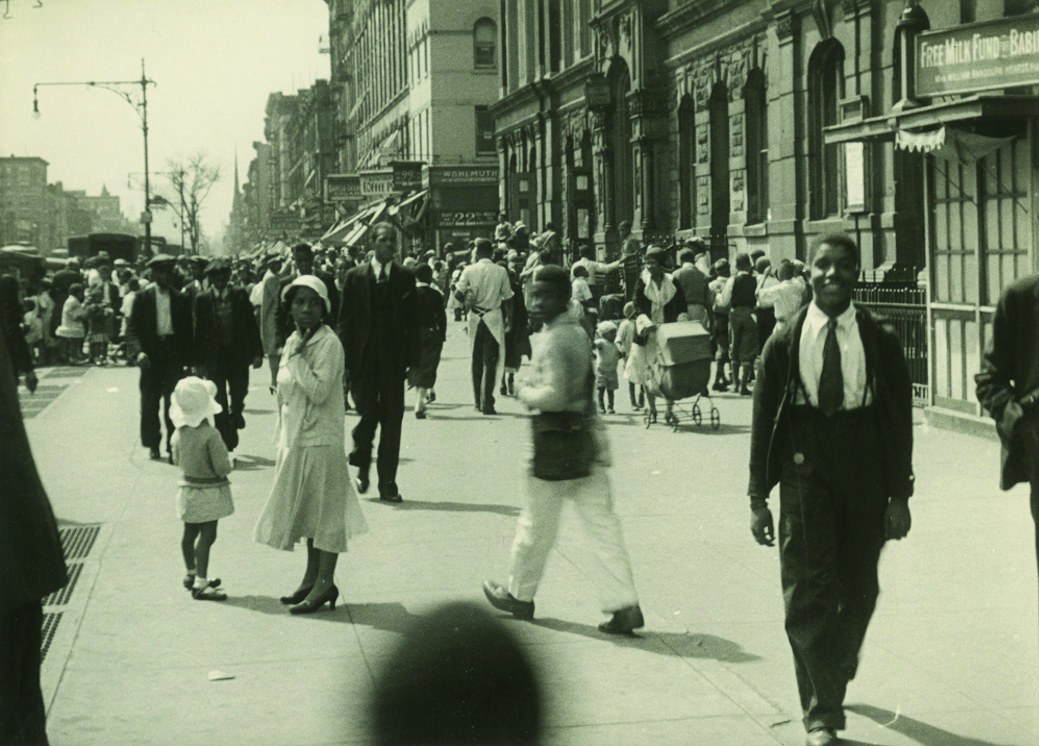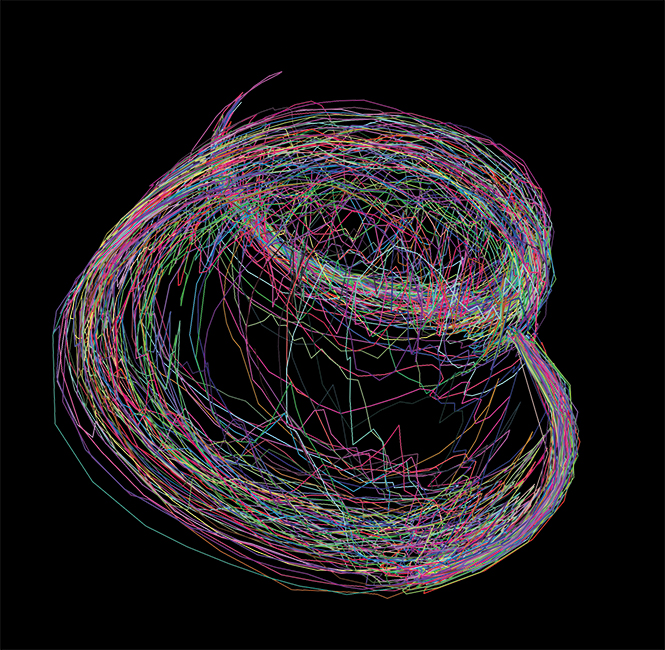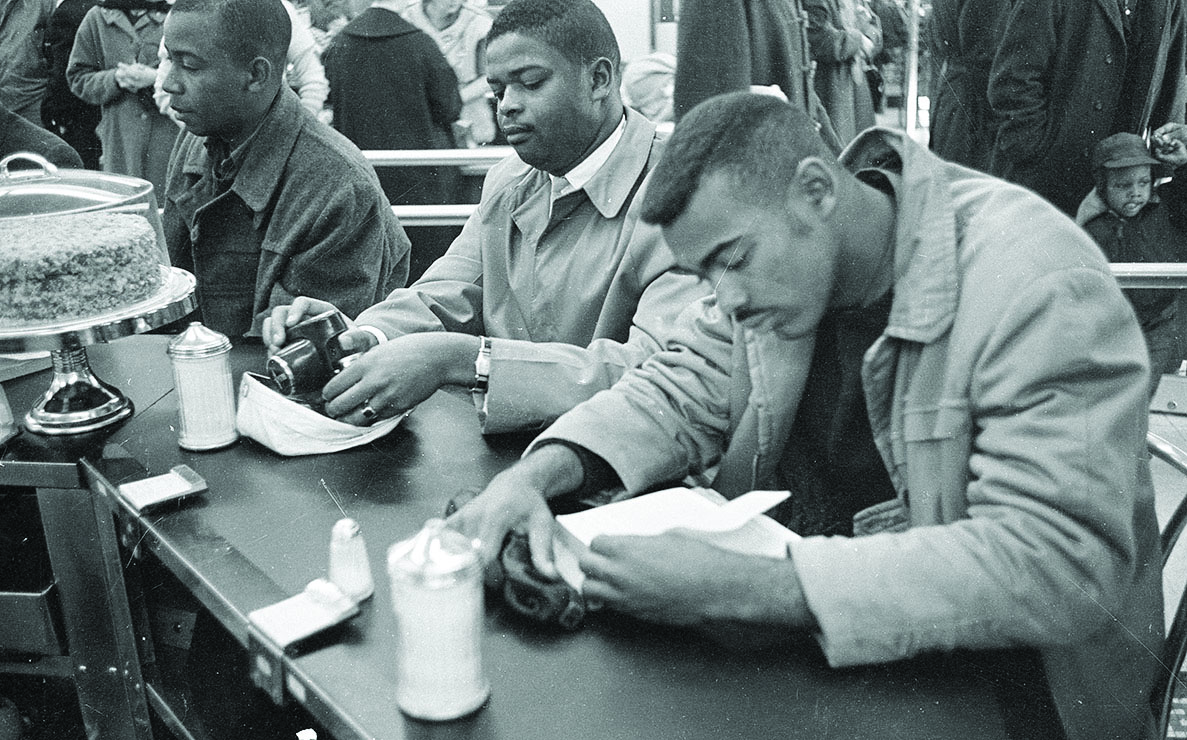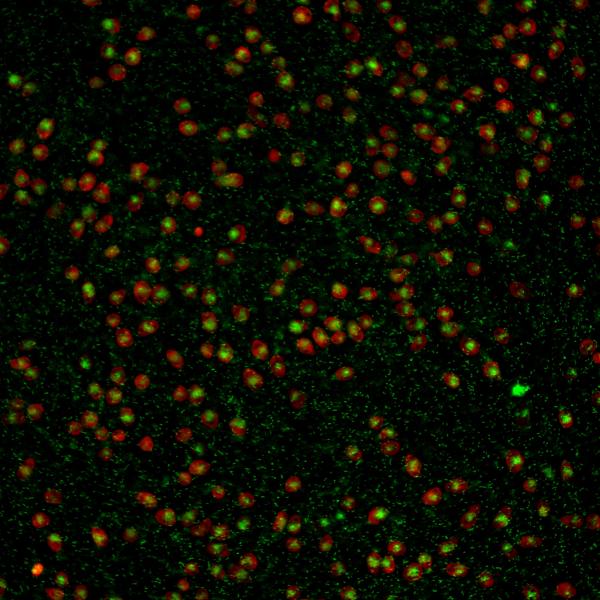Volumes of ink, hordes of data, and entire careers have been devoted to defining order within the world. But what can order’s antithesis tell us?
From emerging mass cultures to quantum computing, five faculty members explore the meaning of disorder – and what we can gain by harnessing its beauty and power. Read expanded versions of the five essays recently featured in Ampersand magazine:
The disordered brain | Urban disorder at the turn of the century | The power of quantum disorder | The political use of disorder | Literary invention in the age of disorder
The disordered brain
By Deanna Barch, as told to Claire Gauen
In large part, the field of mental health research tends to think of mental illness as a disorder. The general perspective is that if our brains and our cognitive and emotional processes are all working as intended, we wouldn't develop things like depression or anxiety or schizophrenia. But I think that is, frankly, a too overly simplistic way of thinking about mental illness. There's so much variability among humans that it is often difficult to say what is or what is not disorder. How should the brain be working? There's a lot of typical variability amongst humans, and we definitely wouldn't want to say that everybody who has somewhat less typical perceptions or experiences has a mental illness or disorder.

This is especially true for children. In my lab and other labs at WashU, we’ve been looking into psychotic-like experiences younger and younger in life. There are many experiences that younger kids have that are typical and normative. For example, take imaginary friends. For most kids, having an imaginary friend is a really positive thing, and we would never want to say that was problematic. It’s wonderful. But if you're talking to a 12-year-old who is interacting with someone in their mind who is mean and awful to them, and it's very distressing – that's not the same experience. When these experiences aren’t transient in the way that we would expect them to be, and when they start getting in the way of having the kinds of relationships that kids want to have, that's when we want to help them figure out how to either not have these experiences or change them in some way. It can happen early, unfortunately. I've seen experiences that I would consider to be problematic psychosis occurring with as young as six-and seven-year-old kids. That's very, very rare, but it can happen.
One complexity is that we know that there are a variety of environmental factors that can impact brain development and can put people at risk for being more likely to develop mental illness. Some of these changes in the brain might actually be very adaptive in the moment. I'll take as an example early adversity or trauma. There are ways in which children cope with early adversity that likely change their brain development and the way they process things in the world. If you're in an abusive relationship with a caretaker, it's going to be protective for the brain to kind of tap itself down because it's really hard to be constantly in a high stress response situation. So, is that disorder? Or is it that your brain and mental systems have adapted themselves to challenging situations, and then it's difficult to readapt?
In my lab, we are really trying to understand when we should be concerned about these experiences and when wes hould not. In this work, we’re identifying factors like whether the experiences last over multiple years, whether they are distressing to the kids, and whether they are getting in the way of them being able to concentrate or do well at school. From there, we're starting to think about how we could do better screening in the community for kids who are having these kinds of early experiences that might be problematic. We do a better job as a field, in schools and pediatricians’offices, for screening for signs and symptoms of autism, depression, and suicidality, but we very rarely ever screen for problematic early evidence of psychosis in the general community. We are trying to work on developing tools that would be useful in that regard – short, accurate predictors – and starting to think about how we can work with public health systems to start to incorporate more of that kind of screening early on.
The longer a child spends experiencing things that are disrupting their ability to make friends, to have relationships with their family, to do well in school – those disruptions create their own problems that are then harder and harder to resolve. The earlier we can try to think about prevention or intervention to help tip kids back into pathways that help them have the experiences that are going to promote healthy development, brain development, social development, and educational development, the more likely it is that we're going to be able to help them be able to live the lives that they want to live and have a high quality of life going forward.
Professor Barch studies brain function and cognitive and language deficits as well as the neurobiological mechanisms that contribute to such deficits.
Urban disorder at the turn of the century
By Douglas Flowe, as told to John Moore
In the early 20th century, a new mass culture emerged in the United States. Amid theaters, bars, saloons, and amusement parks, people discovered spaces where different races and genders sometimes came together that had previously lived separately. Although African Americans were not always invited to the party, ethnicities and cultures mixed in ways rarely seen before. For some, this new culture made a city like New York an amazing Mecca of modernity. For others, it was a dangerous, unfamiliar culture of amalgamation, interracial sex, and moral decay. In short, they saw the new mass culture as urban disorder that needed to be reorganized.

In my first book, Uncontrollable Blackness: African American Men and Criminality in Jim Crow New York, I explore how Black men responded to the tactics civic leaders, reformers, and police officials employed to resegregate the crowds and patrol the boundaries between them. Worried about interracial closeness and the behaviors they associated with it, progressive reformers and politicians used private and public resources to transform the lives of New Yorkers that they saw as disorderly. Modern police forces as we know them today also emerged at that time, and Black men could be arrested for disorderly conduct for something as simple as standing on the corner.
Reformers worried not only about racial plurality but also about how these new urban spaces brought down gender barriers. As single wage laborers, women entered the public realm in new ways looking to enjoy urban delights and amusements like everyone else. Race made this phenomenon even more alarming for reformers since they dreaded the idea those women might come into contact with Black men.
"They saw the new mass culture as urban disorder that needed to be reorganized."
The propaganda surrounding so called “white slavery” demonstrates how these disparate threads intersected. In the third chapter of my book, I write about Roosevelt Sharp, an African American man charged in 1906 with abducting white women and forcing them into sex slavery in places typically called “disorderly houses,” in the legal and popular parlance of the day.
It is clear Sharp indeed ran a brothel, and likely had exploitative and violent relationships with the women in his house. Yet, as I discovered in my research, within that lopsided relationship the women and Sharp worked together in ways white slavery crusaders wished to ignore. Anti-prostitution organizations reinterpreted their relationship as a disorderly, messy, coerced situation. They viewed what was most likely an uneven yet consensual business arrangement as sex slavery because it conformed to their ideas about urban disorder.
Sharp was convicted and received 20 years in prison and his case became a landmark trial in the narratives about white slavery. Progressives used it as a cautionary tale for single white women on the edge of urban disorder, a kind of film noir about the pitfalls of interracial sex and the urban spaces that might encourage it. They also seized the opportunity to ideologically reimagine the world of interracial prostitution and consensual sex as forced, thereby decontaminating the white women involved. Sharp’s guilty verdict ultimately fortified the barriers between white women and Black men — which progressives hoped would hold off that urban disorder a little longer.
Professor Flowe’s research and writing concern themes of criminality, illicit leisure, and masculinity and how they converge with issues of race, class, and space.
The power of quantum disorder
By Kater Murch, as told to Shawn Ballard
Quantum mechanics entails clearly defined units and rules, so it isn’t really disordered. However, there is a sense of disorder that has to do with the complexity of quantum mechanics – and that’s actually really important for how we can apply it.
When physicists say “disorder,” we’re probably talking about uncertainty and entropy. The Heisenberg uncertainty relation is one of the first and most surprising things you learn in quantum mechanics. Basically, you can’t know the position and momentum of a particle at the same time. In a classical world, we can know where something is and how fast it’s going – of course we can; we do that all the time – but that’s impossible to do exactly in quantum mechanics. Even if you know everything you can about a quantum particle, there are still unknowns. The disorder is built into the structure of the theory in the form of uncertainty.

The simplest quantum building block is just one quantum system, what I’ll refer to as a quantum bit or qubit. When I look at the position, momentum, or some other quantity of any qubit, I’ll see randomness in the measurement because the qubit embodies the uncertainty principle. So, while the quantum state of a qubit can be exactly a specific combination of its two states – for example, state zero plus state one – a measurement of its state will randomly give zero or one with equal probability because the qubit occupies a superposition of the two states. Disorder!
That’s how we think about disorder in one quantum system or one simple quantum state, but quantum mechanics becomes really interesting and powerful when you start talking about larger quantum systems. That’s what people are excited about when they hear the word “quantum,” and it fundamentally has to do with the idea of entanglement.
Imagine taking two or three quantum bits or more and writing down one quantum state to describe them all together. The quantum states you write down have to include every possible combination of every state for every qubit. Very quickly, the number of combinations becomes fantastically large. By the time you reach 268 qubits, the number of terms you’d need to write down is larger than the number of particles in the observable universe.
At some point you have to say, okay, it’s not possible to write down exactly what it is because it’s unfathomably complex, even though there’s no disorder. And that’s what’s so exciting about quantum mechanics. We’re describing something so complicated that if you look at it wrong, you just see disorder. But if you look at it right, you might be able to harness that incredible complexity in some useful way. That’s the basis of the power of a quantum computer.
Right now, the most beautiful way to harness that complexity is something called Shor’s algorithm, which could use a quantum computer to factor really large numbers. It’s a very clever way to get these quantum states to interfere so the answer is produced more effectively with a quantum computer than with a classical computer. Even though there’s a lot of uncertainty or disorder – there’s this insane complexity that we can only just touch – everything lines up in a certain way so that you see an answer you need more often than not. By harnessing the disorder, we’re able to do something that would have taken millennia with even the fastest supercomputers.
Building the hardware for quantum computers is a huge challenge, but finding clever ways to use them is an equally large challenge we’re facing now. In the last decade or two, we’ve been slowly getting control over quantum complexity and increasing the number of quantum bits that we can reliably initialize and control. Our goal with the new Center for Quantum Leaps, which we’re developing as part of the Arts & Sciences Strategic Plan, will be to find places where we can use the quantum advantage to benefit researchers at WashU.
There’s a whole range of applications – in fundamental physics and math, new materials and devices, and biomedical and life sciences. For example, in physics, we have a team collaborating on the search for dark matter, and we’re using quantum entanglement to reduce noise and speed up the search. Researchers at the School of Medicine are interested in challenges associated with drug discovery that involve computationally intensive examinations of how drugs interact with some target protein. A quantum computer can more efficiently handle the complexity of drug interactions at the chemical level that involves many atoms, electrons, and orbitals. This is just the beginning. Across disciplines, we’re expanding our scope and looking for opportunities to harness quantum technologies to advance research using the quantum advantage.
Professor Murch’s research addresses atomic, molecular, and optical physics, condensed matter physics, and fundamental questions in quantum mechanics.
The political use of disorder
By Clarissa Rile Hayward, as told to Claire Gauen
I’m interested in questions about the strategic use of disorder. How do actors who are intending to affect some kind of a political outcome capture the power of disorder and use it in a way that promotes change? When citizens intentionally interrupt an established order with a view to creating a certain kind of political effect, what is the political logic or efficacy of doing that?

One tactic I have written about, called “Black Brunch,” began in 2015, when multiracial groups of protesters in various cities disrupted brunch-goers in affluent areas and confronted them with facts about state-enacted and state-sanctioned racial violence against Black people. At the time, many people critiqued this practice, saying that it wouldn't persuade anybody. But I had the intuition that it was still doing important political work — even if the critics were correct and it wasn’t persuasive, and even if it was making people angry.
I wrote an article called “Disruption: What is It Good For?” where central argument I made is that this kind of disruptive protest can exercise what political scientists call agenda-setting power. It can get an issue on the agenda and in front of people. And that changes the incentive structure for political elites. When protestors called attention to racial injustice in the criminal justice system ahead of the 2016 Democratic primaries, for example, the nominees needed to address the problem if they wanted to keep their coalition together. Disruptive protests were a way for citizens to say, "We're going put our question out there, and you're going have to tell us where you stand on it."
"We’re going to put our question out there, and you’re going have to tell us where you stand."
When there’s a critical mass of people who will answer a question a certain way if compelled to choose, but who would prefer not to look at the question at all — that's when the agenda-setting effects of disruptive protests can have the greatest power. The political work of tactics like "Black Brunch" isn't persuading the recipient of the disruption to believe something different than they believe or to hold a different attitude than they already hold. It’s to make them reflect upon beliefs and attitudes that they already have, and face the ways that they are complicit in practice that violate their values. News reports alone don't usually compel people to pay attention to something that they’re motivated to not pay attention to. However, disruptive actions like interrupting a meal or blocking a highway can have that effect.
Join the conversation!
Professor Hayward, a contemporary political theorist, focuses her research on theories of power and identity, democratic theory, and American urban politics. Learn more about her research at a virtual Q&A on Oct. 13 at 4 p.m. CDT.
Literary invention in the age of disorder
By Wolfram Schmidgen, as told to John Moore
In my research on early18th-century literature, theology, and philosophy, I examine how writers in Europe began to realize that disorder – more so than order – is fundamental to the way that the world works. Political revolutions had overturned established regimes in this era, and an explosion in religious sects disrupted the idea of a single, shared religious worldview. As they looked around at the social and religious turmoil of their time, many observers began to wonder if disorder was the basic condition of human life.

In my most recent book, Infinite Variety: Literary Invention, Theology, and the Disorder of Kinds, 1688-1730, I explore how, as frightening as this new reality was, writers like Richard Blackmore and Daniel Defoe were keen to exploit and explore the aesthetic possibilities it created.
Most Christian thinkers previously assumed that God created the world with a discernible order, an assumption reflected in much of the art produced in Europe prior to the 16th century. But as social unrest increased, many writers embraced voluntarism. According to this theology, God did not imprint his image on the world. He created it arbitrarily. As a result, there was no order inherent in nature. God could easily have created the world in a different way.
Voluntarism was embraced by both liberal and conservative thinkers. Surprisingly, conservative writings about disorder took on a utopian flavor in this period. Theologians defended established religion by demonstrating that all kinds of other modes of being are imaginable. In the service of a demonstration that God is all-powerful and truly exists, they talked about other planets having different kinds of creatures with completely different modes of living.
In his 1712 poem Creation, Richard Blackmore crafted a demonstration of disorder. Creation describes the work of the woodcarver Grinling Gibbons, whose creative power came from the way that he transcended the order of species by combining things that do not coexist in nature. Gibbons carved from cedar, but his work depicted flowers and trees that were unrelated to the cedar. Trees feature blooms that do not belong to them. Flowers from geographically distant regions appear alongside each other in the carvings.
"Many observers began to wonder if disorder were the basic condition of human life."
I call this artistic practice the aesthetic of infinite variety, and it is a prime example of the creative uses and possibilities of disorder. Reading Blackmore’s celebration of Gibbons’ carvings, you leave behind what you thought were the subtle distinctions between different things. You celebrate the dissolution of categories and the emergency of more hybrid kinds of creatures.
Daniel Defoe is a more recognizable example of the aesthetics of disorder in literature. Over the course of numerous novels, the life of Robinson Crusoe gets extended and extended. There are all kinds of realistic effects in his novels, but he adds so many on that you get this infinite variety of lives that strays beyond probability and realism. For Defoe, character was a bracket for an infinite variety of adventures that exceed probability and what you assume to be possible in a single life.
Many writers found a disordered world liberating. If nature was no longer an ideal order, then beauty becomes arbitrary, as well. There is no universal standard for beauty anywhere in the world, and there is no longer a sharp distinction between form and deformity.
Professor Schmidgen’s work marries intellectual and literary history, seeking to reconstruct cultural histories that bridge the past and present.




